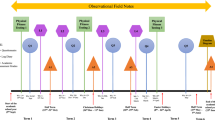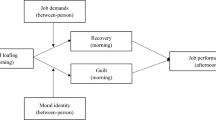Abstract
Competitive balance in sports leagues is essentially concerned with inequality in match and championship outcomes. Measures of inequality or concentration from the income distribution and industrial organization literatures have, therefore, often been used to measure competitive balance. This paper focuses on the use of the Herfindahl-Hirschman Index (HHI) applied to wins. It is shown that variation in the number of teams in the league affects not only the lower bound but also the upper bound of the HHI. An expression is derived for the upper bound and a normalized measure of the HHI, applicable to wins, is proposed. The differences this can make in practice when tracking variations in competitive balance over time are illustrated by considering Depken’s (1999) application of the HHI to Major League Baseball.
Similar content being viewed by others
References
Bajo O., Salas R. (2002). Inequality foundations of concentration measures: An application to the Hannah-Kay indices. Spanish Economic Review 4:311–316
Borland J., MacDonald R. (2003). Demand for sport. Oxford Review of Economic Policy 19:478–502
Cowell, F. A. (2000). Measuring inequality (3rd ed.). Retrieved from http://darp.lse.ac.uk/papersdb/Cowell_measuringinequality3.pdf
Davies S. (1979). Choosing between concentration indices: The iso-concentration curve. Economica 46:67–75
Depken C.A. II (1999). Free-agency and the competitiveness of Major League Baseball. Review of Industrial Organization 14:205–217
Depken C.A. II (2002). Free agency and the concentration of player talent in Major League Baseball. Journal of Sports Economics 3:335–353
Fort R., Maxcy J. (2003). Comment on “Competitive balance in sports leagues: An introduction”. Journal of Sports Economics 4:154–160
Fort R., Quirk J. (1995). Cross-subsidization, incentives, and outcomes in professional team sports leagues. Journal of Economic Literature 33:1265–1299
Fort, R., & Quirk, J. (1997). Introducing a competitive economic environment into professional sports. In W. Hendricks (Ed.), Advances in the economics of sports (Vol. 2). Greenwich, CT: JAI Press.
Hall A. (1994). Testing for a unit root in time series with pretest data-based model selection. Journal of Business & Economic Statistics 12:461–470
Hannah L., Kay J.A. (1977). Concentration in modern industry: Theory, measurement and the U.K. experience. London, Macmillan
Hart P.E. (1975). Moment distributions in economics: An exposition. Journal of the Royal Statistical Society, Series A 138:423–434
Horowitz I. (1997). The increasing competitive balance in Major League Baseball. Review of Industrial Organization 12:373–387
Leeds M., von Allmen P. (2005). The economics of sport (2nd ed). Boston, MA: Pearson Addison Wesley
MacKinnon J.G. (1991). Critical values for cointegration tests. In: Engle R.F., Granger C.W.J. (eds). Long-run economic relationships: Readings in cointegration. Oxford, Oxford University Press
Marfels C. (1971). Absolute and relative measures of concentration reconsidered. Kyklos 24:753–766
Ryan, M. (2004). Domestic matters: The evolution of competitive balance in New Zealand rugby’s National Provincial First Division. B.Com Honours dissertation, Department of Economics, University of Otago.
Schmidt M.B., Berri D.J. (2001). Competitive balance and attendance: The case of Major League Baseball. Journal of Sports Economics 2:145–167
Schmidt M.B., Berri D.J. (2002). Competitive balance and market size in Major League Baseball: A response to baseball’s blue ribbon panel. Review of Industrial Organization 21:41–54
Szymanski S. (2003). The economic design of sporting contests. Journal of Economic Literature 41:1137–1187
Utt J. Fort R. (2002). Pitfalls to measuring competitive balance with Gini coefficients. Journal of Sports Economics 3:367–373
Author information
Authors and Affiliations
Corresponding author
Rights and permissions
About this article
Cite this article
Owen, P.D., Ryan, M. & Weatherston, C.R. Measuring Competitive Balance in Professional Team Sports Using the Herfindahl-Hirschman Index. Rev Ind Organ 31, 289–302 (2007). https://doi.org/10.1007/s11151-008-9157-0
Published:
Issue Date:
DOI: https://doi.org/10.1007/s11151-008-9157-0




